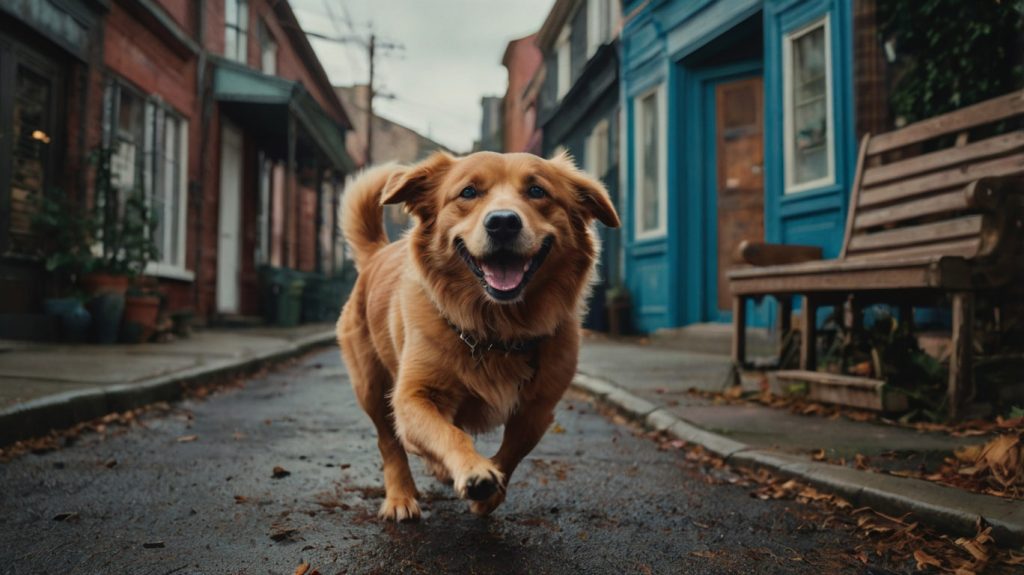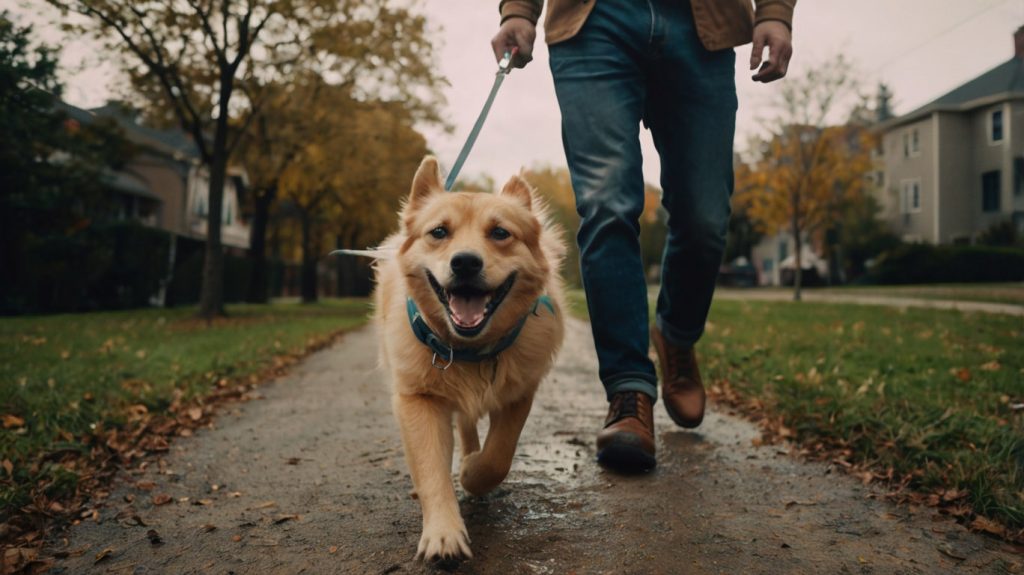Understanding Leash Reactivity
Leash reactivity is a common but frustrating behavior for many dog owners. It happens when a dog barks, growls, lunges, or whines while on a leash—especially when encountering other dogs, people, or distractions. Although it may look like aggression, it often stems from fear, frustration, or a lack of socialization.
Imagine this: You’re walking your dog in the park, and suddenly another dog appears around the corner. Within seconds, your calm pup transforms into a barking, pulling tornado. You’re embarrassed, flustered, and not sure how to fix it. Sound familiar?
You’re not alone—and the good news? You can fix leash reactivity.
What Causes Leash Reactivity in Dogs
Several reasons may contribute to leash reactivity:
- Frustration-based reactivity: The leash restricts freedom, causing built-up energy.
- Fear-based reactivity: Your dog feels unsafe and lashes out defensively.
- Lack of socialization: Limited exposure to other dogs or people can increase stress.
- Negative past experiences: A bad encounter can lead to anticipatory reactivity.
Understanding the root cause is the first step toward a solution.

Signs Your Dog is Leash Reactive
Not sure if your dog is experiencing leash reactivity? Look for:
- Barking, growling, or whining at the sight of another dog
- Pulling hard on the leash to move closer—or away
- Fixated staring or body stiffening
- Lunging suddenly without warning
These behaviors signal your dog’s discomfort and need for help.
How Leash Reactivity Affects Your Bond
Left unaddressed, leash reactivity can strain your relationship with your dog. Walks become stressful, outings are avoided, and tension builds between you both. However, when addressed positively, training can strengthen your connection, trust, and communication.
Effective Training Methods for Leash Reactivity
Thankfully, you don’t need to live with leash reactivity forever. With consistency, patience, and the right tools, improvement is not only possible—it’s likely. Here’s what works:
Desensitization and Counter-Conditioning
Gradually expose your dog to triggers at a distance where they feel safe. Then, pair the presence of the trigger with something positive—like a favorite treat.
Example: Your dog sees another dog from 30 feet away and gets a treat. The goal is to shift the emotional response from fear to excitement.
The Engage-Disengage Game
- Step 1: Let your dog notice the trigger.
- Step 2: Before they react, mark it with a click or “yes,” and reward.
- Step 3: Over time, your dog will look at you instead of lunging.
This game rewires the brain and creates positive patterns.
Use a Front-Clip Harness or Head Halter
Proper tools give you better control and reduce pulling. A front-clip harness gently redirects your dog’s momentum, while a head halter can offer increased control with less effort.
Real-Life Story: How Max Overcame Leash Reactivity
Max, a 2-year-old border collie, would bark and lunge at every dog during walks. His owners felt helpless. After consulting a certified trainer, they started desensitization, used a no-pull harness, and practiced reward-based games.
Three months later, Max calmly walked past two dogs in the park. He looked at his owner instead of reacting. With consistency and compassion, Max became the dog they always knew he could be.
Common Mistakes When Dealing with Leash Reactivity
Avoid these common errors that could make things worse:
- Yelling or punishing your dog: Increases fear and damages trust.
- Pulling the leash back hard: Adds tension, both physically and emotionally.
- Flooding (too much exposure too fast): Can overwhelm your dog and cause setbacks.
- Skipping basic obedience: Foundation skills like “sit” and “look at me” are essential.
Instead, lead with patience and plan your progress.

Creating a Positive Walking Routine
Structure helps dogs feel safe. Here’s how to build a routine:
- Walk during quieter times to avoid overstimulation.
- Bring high-value treats to reward calm behavior.
- Practice focus cues before leaving the house.
- Stay relaxed. Your energy sets the tone.
Routines build confidence—for both of you.
Using Clicker Training to Reinforce Calm Behavior
Clicker training is a precise and effective way to communicate. Here’s a quick guide:
- Click the moment your dog notices the trigger without reacting.
- Follow with a treat.
- Repeat consistently.
Over time, your dog will associate calm behavior with good outcomes.
How to Manage Unexpected Triggers
Sometimes, things happen. Another dog pops out of nowhere or a skateboard zips by. Here’s what to do:
- Turn and walk the other way.
- Use a cue like “Let’s go!” to redirect focus.
- Step behind a car or tree to create distance.
- Remain calm and reward as soon as your dog relaxes.
Reacting fast—and kindly—can defuse tense moments.
Does Age Affect Leash Reactivity?
Puppies may bark playfully, while older dogs can become reactive after negative experiences. Age matters, but any dog can learn better leash manners with the right approach.
When to Consult a Professional Dog Trainer
If your dog’s reactivity seems intense, or progress stalls, it may be time to bring in a certified positive reinforcement trainer or behaviorist. Look for credentials like CPDT-KA or IAABC certifications.
Leash Reactivity and Breed Tendencies
Certain breeds may be more reactive due to their genetic makeup. For instance:
- Herding breeds may fixate and bark
- Guarding breeds may react out of suspicion
- Terriers may lunge with high energy
However, breed is just one piece of the puzzle—environment and training play a huge role.
Leash Reactivity and Off-Leash Behavior
Interestingly, some leash-reactive dogs behave perfectly off-leash. This suggests that the leash itself can be a trigger. It limits freedom, adds tension, and signals conflict. Training helps bridge the gap between leash and off-leash comfort.
How Long Does It Take to Fix Leash Reactivity?
This depends on:
- Severity of behavior
- Consistency in training
- Use of appropriate methods
- The dog’s past experiences
Some dogs improve in weeks, while others need months. The key is progress, not perfection.
FAQs about Leash Reactivity
Is leash reactivity the same as aggression?
No. Reactivity is often fear-based or frustration-based. True aggression has a different root cause.
Can a leash-reactive dog be fixed?
Yes! With patience, training, and consistency, many reactive dogs can walk calmly again.
Should I avoid other dogs completely?
Not forever. Avoidance in early training stages is okay, but gradual exposure helps long-term.
What’s the best leash for reactive dogs?
A sturdy 4–6 foot leash paired with a front-clip harness or head halter is ideal.
Is group training good for reactive dogs?
Not always. One-on-one sessions with a behaviorist are often more effective.
Can I use a muzzle for safety?
Yes, a basket muzzle can be helpful when used correctly and with positive associations.
Conclusion : Leash Reactivity Can Be Solved with Patience and Training
Leash reactivity doesn’t mean your dog is “bad.” It means they’re struggling—and they need your help. By using compassionate, science-backed methods like desensitization, positive reinforcement, and consistent routines, you can turn your walks from chaos to calm.
Every dog has the potential to improve. Start small, celebrate wins, and remember—this journey is worth it. You’re not just fixing a behavior; you’re strengthening your bond.

